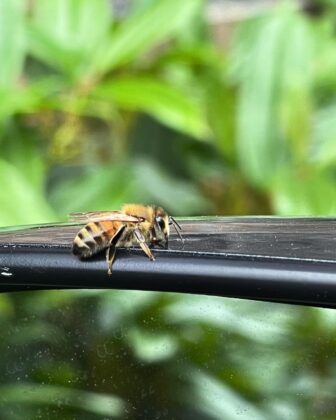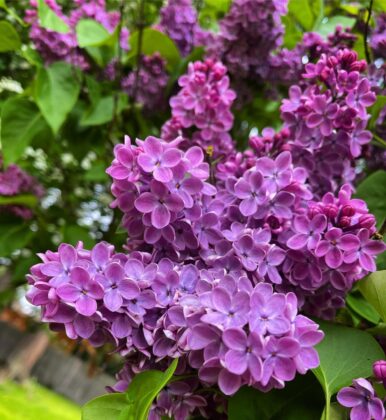7 Types of Plants to Attract Pollinators
Attract the best pollinators! There’s a new trend on the rise – collecting beautiful indoor and outdoor plants. Below is a list of 7 types of plants to attract pollinators in the Pacific Northwest, but first we need to learn a little about pollinators.
Pollinators come in several varieties. Some of the more well-known pollinators are bees of all varieties, wasps and butterflies, but there are other creatures that move pollen from flower to flower. Some of these lesser-known pollinators include moths, hummingbirds and bats. We can thank pollinators of all kinds for successful crops, beautiful blooms and the continuance of all life on this planet. They truly are the creators of life and we should do all we can to attract pollinators in our gardens.
Types of Plants to Attract Pollinators

A Western Leafcutter Bee takes a rest on a car window – Photo credit: Shelby Beckwith
Common Sunflowers
They may be called common, but the Common Sunflower is dazzling and attracts pollinators from far and wide. The bright yellow blooms call the birds and the bees over to party on its large center. Start Common Sunflowers from seed in the springtime and enjoy beautiful blooms in no time.
Lupine
Lupine are tall flowers with stacks of periwinkle-purple bell-like blooms. The flowers look as if they are from a wonderland and will turn your yard into your own personal fairy garden. In the Puyallup Valley, near the popular Farm 12 restaurant and event center, there is a large field of lupine with Mount Rainier standing picturesque in the background.
This field is full to bursting with flowers to attract pollinators and also photographers hoping to catch a timeless moment in the lupine with our Lady Rainier.
Wild Roses
If you don’t already have wild roses in your garden, odds are a friend of yours does and can spare a root or two. Wild roses are another plant for your garden that has an essence of whimsy. These plants are hardy and will typically never die off even in the coldest winters. All summer long, you will find butterflies on blooms that mimic a watercolor painting.
Lilacs
Lilacs are an amazing plant option to attract pollinators to your garden. It is a sign of spring when you see the flowers buds forming in clustered bunches on the long, thin branches of the tree. The very fragrant blooms grow in varieties of white, various shades of purple and sometimes slightly light pink. Keep the lilac tree pruned to create a dense canopy and enjoy a full tree of blooms.

Lilacs grown in the Pacific Northwest – Photo credit: Shelby Beckwith
Spiraea
Spiraea are a fluffy and fragrant puffs of blush pink flowers that bloom around June. This suckering bush will fill in space in your garden over the years so make sure to plant it somewhere with room to grow. Pollinators will be lining up around the corner for their chance at these pretty little poofs.
Showy Milkweed
It’s all in the name with this attractive flower. The Showy Milkweed is a large ball of clustered blooms that form atop a long stem. Hummingbirds love the light pink to light purple and white star-shaped flowers.
The flowers bloom from late spring to early summer. These flowers are crucial to the life of monarch butterflies who are close to extinction. You can plant showy milkweed in your garden to do your part to save these magical winged creatures.
Hawthorne Trees
Although these trees are thorny, they produce a crucial environment for birds, butterflies and bees to live, pollinate and rest. Anyone with a Hawthorne tree will tell you it’s one of the busiest places in the garden and will certainly attract pollinators.
The countless small blooms transform into berries over the summer to further benefit the pollinator population after bloom season. The trees grow at a moderate pace and can be easily maintained by pruning regularly.






